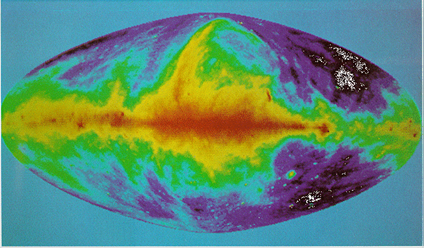
تاريخ الفيزياء

علماء الفيزياء


الفيزياء الكلاسيكية

الميكانيك

الديناميكا الحرارية


الكهربائية والمغناطيسية

الكهربائية

المغناطيسية

الكهرومغناطيسية


علم البصريات

تاريخ علم البصريات

الضوء

مواضيع عامة في علم البصريات

الصوت


الفيزياء الحديثة


النظرية النسبية

النظرية النسبية الخاصة

النظرية النسبية العامة

مواضيع عامة في النظرية النسبية

ميكانيكا الكم

الفيزياء الذرية

الفيزياء الجزيئية


الفيزياء النووية

مواضيع عامة في الفيزياء النووية

النشاط الاشعاعي


فيزياء الحالة الصلبة

الموصلات

أشباه الموصلات

العوازل

مواضيع عامة في الفيزياء الصلبة

فيزياء الجوامد


الليزر

أنواع الليزر

بعض تطبيقات الليزر

مواضيع عامة في الليزر


علم الفلك

تاريخ وعلماء علم الفلك

الثقوب السوداء


المجموعة الشمسية

الشمس

كوكب عطارد

كوكب الزهرة

كوكب الأرض

كوكب المريخ

كوكب المشتري

كوكب زحل

كوكب أورانوس

كوكب نبتون

كوكب بلوتو

القمر

كواكب ومواضيع اخرى

مواضيع عامة في علم الفلك

النجوم

البلازما

الألكترونيات

خواص المادة


الطاقة البديلة

الطاقة الشمسية

مواضيع عامة في الطاقة البديلة

المد والجزر

فيزياء الجسيمات


الفيزياء والعلوم الأخرى

الفيزياء الكيميائية

الفيزياء الرياضية

الفيزياء الحيوية

الفيزياء العامة


مواضيع عامة في الفيزياء

تجارب فيزيائية

مصطلحات وتعاريف فيزيائية

وحدات القياس الفيزيائية

طرائف الفيزياء

مواضيع اخرى
Galactic and Extragalactic Sources
المؤلف:
Diane Fisher Miller
المصدر:
Basics of Radio Astronomy
الجزء والصفحة:
p56
2-3-2016
2076
Galactic and Extragalactic Sources
We can think of extra-terrestrial radio emissions as originating either within our galaxy or outside our galaxy. Inside our galaxy, remnants of supernova explosions are strong sources of radio emissions.
Outside our galaxy, we find great variation in the radio emissions from different galaxies. So we have arbitrarily divided these other galaxies into “normal” and “active” galaxies.

Radio View of the Milky Way
Normal galaxies are not very strong sources. For example, the Great Andromeda Spiral, the largest galaxy in our so-called local group of galaxies, emits 1032 watts of power. In contrast, Cygnus A, over half a billion light years from Earth, is one of the most conspicuous radio sources in the sky, with a power output of 1038 watts.
Active galaxies include radio galaxies, quasars, blasars, and Seyfert Galaxies.
Radio galaxies emit a very large quantity of radio waves.
Quasars, coined from the phrase “quasi-stellar radio source,” may be pouring out energy a million times more powerfully than a normal galaxy. Quasars are the most distant objects we have detected, some approaching 15 billion light years distant their radiation requiring nearly the age of the universe to reach us. And some seem to be receding from us at a rate 90% the speed of light.
Blasars are galaxies with extremely bright centers, whose luminosity seems to vary markedly over a very short period.
Seyfert galaxies are also intense sources of radiation whose spectra include emission lines.
In all these, the predominant radiation-producing mechanism is synchrotron radiation. An active galaxy may radiate 1,000,000 times more powerfully in the radio frequencies than a normal galaxy. Much of the radiation often seems to come from the nucleus of the galaxy. Astronomers are now investigating the plausibility of a “unified theory of active galaxies,” which would account for the varying behavior observed by all these types of active galaxies. It may be that these galaxies have a black hole or a supermassive black hole at their centers, and their appearance to us depends on the angle at which we are observing them.
By Kaufmann, for more information, including many color photos, about these fascinating and mysterious objects.
 الاكثر قراءة في مواضيع عامة في علم الفلك
الاكثر قراءة في مواضيع عامة في علم الفلك
 اخر الاخبار
اخر الاخبار
اخبار العتبة العباسية المقدسة

الآخبار الصحية















 قسم الشؤون الفكرية يصدر كتاباً يوثق تاريخ السدانة في العتبة العباسية المقدسة
قسم الشؤون الفكرية يصدر كتاباً يوثق تاريخ السدانة في العتبة العباسية المقدسة "المهمة".. إصدار قصصي يوثّق القصص الفائزة في مسابقة فتوى الدفاع المقدسة للقصة القصيرة
"المهمة".. إصدار قصصي يوثّق القصص الفائزة في مسابقة فتوى الدفاع المقدسة للقصة القصيرة (نوافذ).. إصدار أدبي يوثق القصص الفائزة في مسابقة الإمام العسكري (عليه السلام)
(نوافذ).. إصدار أدبي يوثق القصص الفائزة في مسابقة الإمام العسكري (عليه السلام)


















